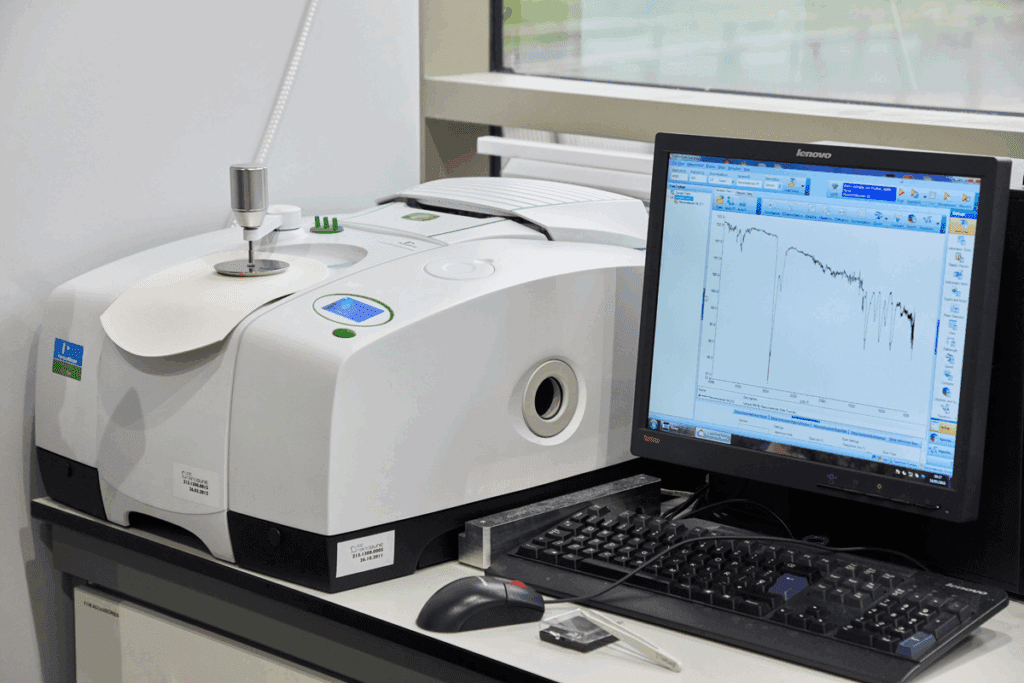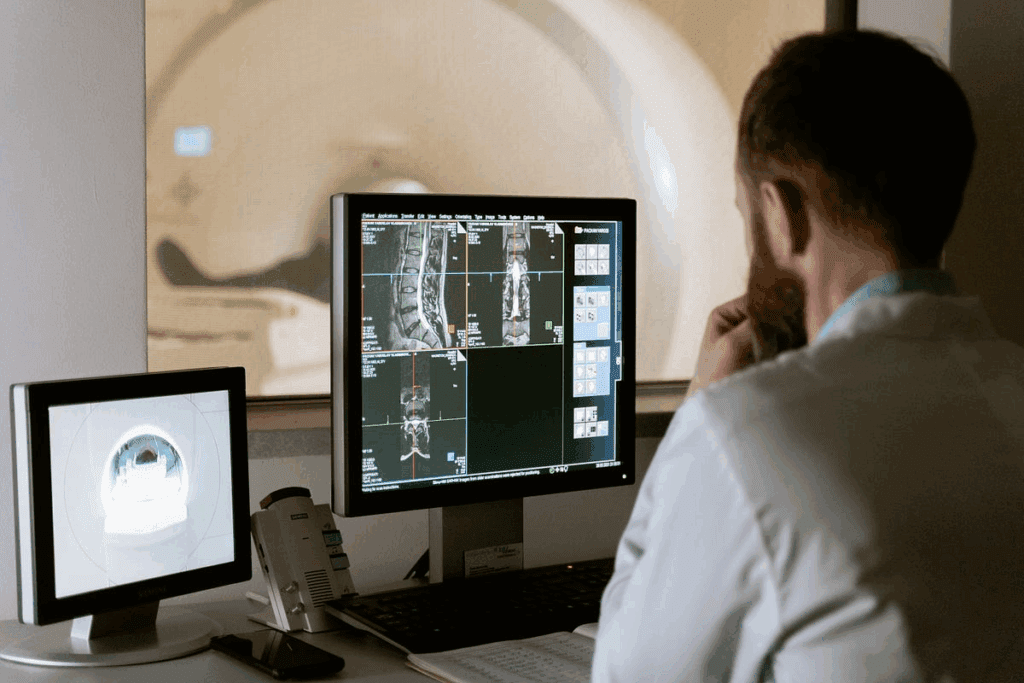Last Updated on November 26, 2025 by Bilal Hasdemir

Understanding medical terms can be tough, with many abbreviations having different meanings. At Liv Hospital, we know how important clear communication is in healthcare.
The term “IR” has several meanings that can really affect how we care for patients. In medical settings, “Medical Expert” means a doctor who specializes in Interventional Radiology.
It’s key to know the different ways “IR” can be used. This helps doctors and other healthcare workers talk clearly and work well together. We’ll look at what “IR” means and why it matters in healthcare. In many cases, you might also see the term “Dr IR”, referring to a doctor specializing in interventional radiology — a field focused on minimally invasive, image-guided procedures for diagnosis and treatment.
Key Takeaways
- IR has multiple meanings in medical contexts.
- Medical Expert.
- Understanding IR meanings is key to good patient care.
- Liv Hospital offers patient-focused care for complex health issues.
- Clear talk among healthcare pros is vital for top-notch care.
The Multiple Meanings of IR Across Different Fields

The term “IR” has different meanings in various fields, which can cause confusion. It’s important to know the specific meaning of “IR” in each field. This is true whether we’re talking about healthcare or digital communication.
In healthcare, “IR” usually means Interventional Radiology. This is a field that uses imaging to guide small procedures. But online, “IR” can mean “In Real” or “I Am.” This shows how internet language and abbreviations change over time.
Common Abbreviations and Their Contexts
The meaning of “IR” changes based on where it’s used. In healthcare, it’s all about Interventional Radiology. This field has changed how doctors diagnose and treat some conditions.
But in the digital world, “IR” has new meanings. For example, online, people might use it to say “In Real” or “I Am.” This shows how language evolves to fit online communities.
Why Context Matters When Interpreting IR
Understanding the context of “IR” is key to avoiding confusion. The same letters can mean very different things in different places. This could be in a medical journal, a social media post, or a technical document.
To get the right meaning of “IR,” look at the context, the audience, and the purpose. This way, we can make sure the message is clear and avoid misunderstandings.
IR in Medical Context: Interventional Radiology Explained

Interventional radiology is changing healthcare with new, image-guided treatments. It’s a medical field that uses imaging to do procedures without invasive surgery. This makes treatments safer and less invasive for patients.
Definition and Scope of Interventional Radiology
Interventional radiology uses images to guide treatments. It treats many conditions like vascular diseases and cancer. Healthcare professionals use IR for precise treatments that heal faster and with fewer risks.
Key aspects of IR include:
- Minimally invasive procedures
- Image guidance using technologies like X-ray, ultrasound, and MRI
- Diagnostic and therapeutic interventions
A study in the Journal of Vascular and Interventional Radiology says IR is key in modern medicine. It offers a less invasive option for many patients.
“The future of IR lies in its ability to continue innovating and expanding its applications, improving patient outcomes and quality of life.”
History and Evolution of IR as a Medical Specialty
IR started in the 1960s with the first angiographic procedures. It has grown a lot, thanks to better imaging and new devices. Now, IR is its own medical field with special training and certifications.
| Year | Milestone in IR |
| 1960s | First angiographic procedures |
| 1980s | Introduction of angioplasty |
| 2000s | Advances in embolization techniques |
IR is getting even better, aiming for more precise and effective treatments.
Understanding the Professional Title “Medical Expert” in Healthcare
The title ‘Medical Expert’ is key to knowing a doctor’s skill in interventional radiology. It means they have a lot of medical training and specialize in a certain area.
In healthcare, titles show a doctor’s knowledge and skill. The ‘Medical Expert’ title means a doctor is very skilled in radiology and has a deep understanding of medicine.
The Combination of Doctor and Interventional Radiologist Qualifications
A Medical Expert. They use imaging to guide small procedures to diagnose and treat diseases.
Interventional radiologists do many things, like fixing blood vessels and treating tumors. Their work helps patients get better with less harm.
Educational Requirements and Certification Path
To be a Medical Expert, one needs a lot of education and training. This includes:
- Getting an MD or DO degree from a medical school.
- Doing a residency in radiology.
- Getting extra training in interventional radiology through a fellowship.
- Getting certified by a group like the American Board of Radiology.
The path to becoming a Medical Expert. It shows how complex and detailed interventional radiology is. This training ensures Medical Expert-notch care.
| Qualification | Description | Duration |
| Medical School | MD or DO degree | 4 years |
| Residency | Radiology or related field | 4-5 years |
| Fellowship | Interventional Radiology | 1-2 years |
| Certification | American Board of Radiology | Varies |
Knowing what a Medical Expert is. It’s important when looking for special medical treatments.
IR Procedures: Minimally Invasive Techniques in Modern Medicine
IR procedures lead the way in medical innovation, providing safer options than traditional surgery. They have greatly improved how we treat many medical conditions. This has changed the face of Interventional Radiology (IR).
Common IR Procedures and Their Applications
Interventional Radiology includes many procedures for diagnosing and treating medical issues. Some key IR procedures are:
- Angioplasty and Stenting: Open blocked or narrowed blood vessels.
- Embolization: Cuts off the blood supply to specific areas, often for cancer treatment.
- Tumor Ablation: Uses minimally invasive methods to destroy cancerous tumors.
- Biopsies: IR-guided biopsies take precise tissue samples.
These procedures are used in many medical fields, like oncology, cardiology, and vascular surgery. IR procedures often mean less invasive surgery. This leads to faster recovery times and fewer complications.
Imaging Technologies Used in Interventional Radiology
The success of IR procedures depends on advanced imaging technologies. We use different imaging modalities for our interventions, including:
- Fluoroscopy: Gives real-time X-ray images.
- Ultrasound: Uses sound waves for body images.
- Computed Tomography (CT): Offers detailed cross-sectional images.
- Magnetic Resonance Imaging (MRI): Provides high-resolution images without radiation.
These imaging technologies help us perform complex procedures safely and precisely. The combination of advanced imaging with IR procedures has greatly contributed to the growth of Interventional Radiology.
As IR advances, we see shorter patient recovery times, fewer complications, and more uses in medicine. The future of IR looks bright, with ongoing research and technology advancements promising better patient outcomes.
Recent Advances in IR: Improving Patient Outcomes
IR has changed how we treat complex medical issues. Now, patients get treatments that are less invasive and very effective. As we explore new possibilities in Interventional Radiology, patient care is getting better.
“The field of Interventional Radiology is rapidly evolving, with new technologies and techniques being developed to enhance patient outcomes,” says Medical Expert, a leading expert in IR.
“These advancements are not only improving the quality of life for our patients but also expanding the range of conditions that can be treated effectively.”
Reduced Recovery Times and Lower Complication Rates
Recent IR advancements have greatly reduced recovery times for patients. Now, we can treat conditions with less invasive procedures. This means less tissue damage and trauma to the patient. As a result, patients stay in the hospital for shorter periods and can get back to their normal activities faster.
Also, IR procedures have lower complication rates than traditional surgery. Advanced imaging technologies help us make more accurate diagnoses and treatments. This reduces the risk of bad side effects.
Expanding Applications in Various Medical Conditions
IR’s uses are growing, with new treatments for many medical conditions. It’s now a key part of cancer care and vascular disease management. For example, IR techniques like embolization and ablation help treat tumors. Angioplasty and stenting procedures also improve outcomes for vascular disease patients.
Looking ahead, IR will remain a critical part of medical care. With new tech and techniques, we’ll see even more innovative uses of IR in the future.
IR in Cancer Care: Targeted Treatments and Innovations
IR techniques are changing cancer care. They offer precise, minimally invasive treatments. This means less recovery time and better results for patients.
We’re seeing a big change in cancer treatment. IR is a key part of this change.
Tumor Ablation and Embolization Techniques
Tumor ablation uses heat or cold to kill cancer cells. Embolization stops tumors from getting blood, starving them of nutrients and oxygen.
These methods help patients with tumors that can’t be removed. They target the tumor, sparing healthy tissue. This reduces complications and improves life quality.
Complementary Role to Traditional Cancer Therapies
IR doesn’t replace traditional cancer treatments. It works alongside them. This creates a more complete treatment plan for each patient.
The table below shows some IR procedures used in cancer care and their uses:
| IR Procedure | Application in Cancer Care |
| Tumor Ablation | Destroys tumors using heat or cold, suitable for patients with inoperable tumors. |
| Embolization | Cuts off the blood supply to tumors, reducing tumor size and alleviating symptoms. |
| Chemoembolization | Delivers chemotherapy directly to tumors while cutting off the blood supply. |
Adding IR to cancer care gives patients more options. It can lead to better outcomes. As IR grows, we’ll see more ways to fight cancer.
Vascular Applications of IR: Treating Blood Vessel Disorders
IR is changing how we treat blood vessel disorders, giving hope to patients everywhere. Vascular diseases include blockages, aneurysms, and malformations. IR’s methods are key in managing these issues.
Angioplasty and Stenting Procedures
Angioplasty and stenting are common IR treatments for vascular diseases. Angioplasty uses a balloon to widen narrowed or blocked blood vessels. This restores blood flow. A stent, a small, mesh-like tube, is often used to keep the vessel open.
These methods help patients with PAD or CAD a lot. They improve blood flow, making life better for these patients.
| Procedure | Description | Benefits |
| Angioplasty | Balloon angioplasty to widen narrowed or blocked vessels | Restores blood flow, minimally invasive |
| Stenting | Placement of a stent to keep the vessel open | Maintains vessel patency, reduces risk of re-narrowing |
Treatment of Aneurysms and Vascular Malformations
IR is also key in treating aneurysms and vascular malformations. Endovascular aneurysm repair (EVAR) is a minimally invasive method for aortic aneurysms. It involves placing a stent-graft in the aorta to stop the aneurysm from growing or rupturing.
Vascular malformations, like AVMs, are treated with IR too. Embolization is often used, where materials are injected to block blood flow. This reduces the risk of complications.
IR offers targeted treatments that are effective and quick. They also reduce the risks of traditional surgery.
Pain Management Through IR: Innovative Approaches
Interventional Radiology (IR) is key in pain management, bringing new ways to help those with chronic pain. Just like we need to tackle air pollution for health, we must manage pain well for our patients’ well-being. It’s vital for improving their quality.
IR brings new methods to manage pain, like nerve blocks and spinal interventions. These are designed to be gentle, cutting down on risks and helping patients heal faster.
Nerve Blocks and Spinal Interventions
Nerve blocks inject medicine into nerves to stop pain signals. It’s great for chronic pain in one area. Spinal interventions, like spinal cord stimulation or epidural injections, focus on the spine.
These methods are highly effective because they tackle pain at its source. They offer a break from traditional pain meds, which can have big side effects.
Advantages Over Traditional Pain Management Methods
IR pain management has many benefits. First, these methods are minimally invasive, causing less damage and trauma than old surgeries. This leads to fewer problems and quicker recovery for patients.
Second, IR can give lasting pain relief, cutting down on the need for constant meds. This is a big plus for those at risk of getting hooked on painkillers or who haven’t found relief with usual methods.
- Reduced recovery times
- Lower risk of complications
- Long-term pain relief
- Minimally invasive techniques
By using IR’s latest tech, we offer our patients effective, new ways to manage pain. This boosts their life quality and shows IR’s important role in today’s healthcare.
IR Meaning in Digital Communication and Chat
In the digital world, knowing what ‘IR’ means is key. It can mean “in real” or “I am” online. This makes it useful in many ways.
IR as “In Real” or “I Am” in Online Contexts
‘IR’ is very flexible in online talks. It can mean something is real, not just made up. Or, it can show what the speaker is doing right now.
For example, saying “IRL, I’m at the store” means “in real life, I’m at the store.” Here, ‘IRL’ is used to add more detail. But ‘IR’ alone can also show something is real or happening now.
Examples of ‘IR’ in Digital Communication:
- IR 24, meaning “I am 24.”
- IR ready, meaning “I am ready.”
Evolution of Internet Shorthand and Abbreviations
The use of ‘IR’ shows how internet shorthand has evolved. As we use digital platforms more, we need quick ways to share ideas. ‘IR’ and other abbreviations help with this.
This change isn’t just about being fast. It also shows how we talk differently now. Social media, texting, and forums have made our language more casual and creative.
The world of digital talk is always changing. This means abbreviations and their meanings can change, too. They’re influenced by culture and new tech.
Keeping up with these changes is key to good online communication. As we keep using the internet, knowing about new shortcuts will help us stay connected.
Institutional Excellence: How Facilities Like Liv Hospital Advance IR
Liv Hospital leads in medical innovation, focusing on Interventional Radiology (IR). We see how places like Liv Hospital are key in growing medical fields. Just as cities and countries work to better public health, Liv Hospital does the same for IR.
Our goal at Liv Hospital is to offer internationally competitive care and follow up-to-date academic protocols. This shows our dedication to IR and ensures patients get top-notch care.
Internationally Competitive Care Standards
We aim to keep high care standards that match the best globally. This means our team gets constant training and we use the newest medical tech.
Our IR care is a team effort. We make sure every patient gets care that fits their needs perfectly.
Implementation of Up-to-Date Academic Protocols
IR is always changing, with new methods and tech coming out. At Liv Hospital, we keep up with these changes. This way, our patients get the newest care options.
By using up-to-date academic protocols, we improve patient results. We also help grow IR as a medical field.
- We update our treatment plans with the latest research and findings.
- We work with global medical groups to share the best practices.
- Our medical team gets ongoing education and training to stay current.
At Liv Hospital, we’re all about excellence and innovation in IR. We want to make a big difference in patient care and results.
Conclusion: The Evolving Significance of IR Across Disciplines
The term “IR” has different meanings in many fields. It ranges from Interventional Radiology in medicine to digital communication. Its changing importance shows how society and technology are evolving.
In medicine, “IR” has changed patient care a lot. It uses new, less invasive methods to help patients heal faster. Places like Liv Hospital are leading in these advancements, setting high care standards worldwide.
Knowing about “IR” in many areas helps us see its wide uses and effects. As tech and medicine keep improving, “IR” will become even more important. This means we need to keep learning and staying informed.
FAQ
What does IR stand for in medical contexts?
In medicine, IR stands for Interventional Radiology. It’s a field that uses imaging to guide small procedures.
What is Interventional Radiology?
Interventional Radiology uses imaging like X-rays and MRI to guide small procedures. It helps diagnose and treat many health issues.
What does “Medical Expert” mean?
“Medical Expert” means a doctor who specializes in Interventional Radiology. They are very skilled in performing small procedures.
What are some common IR procedures?
IR procedures include angioplasty, stenting, and tumor ablation. They treat vascular diseases, cancer, and chronic pain.
How does IR contribute to cancer care?
IR helps in cancer care with treatments like tumor ablation. These treatments can work with traditional therapies to improve results.
What is the role of IR in pain management?
IR helps manage pain with nerve blocks and spinal interventions. These methods offer relief for chronic pain.
What does IR mean in digital communication and chat?
In digital chats, IR can mean “In Real” or “I am.” Its meaning changes based on the context.
How have recent advances in IR improved patient outcomes?
Recent IR advances have made procedures safer and more effective. They reduce recovery times and lower complication rates.
What is the significance of institutions like Liv Hospital in advancing IR?
Places like Liv Hospital advance IR by setting high care standards. They use the latest academic protocols to ensure top care for patients.
What are the educational requirements for becoming an Interventional Radiologist?
To be an Interventional Radiologist, one needs a lot of education and training. This includes a radiology residency and Interventional Radiology certification.
How does IR relate to vascular health?
IR is key to vascular health. Interventional Radiologists use angioplasty and stenting to treat vascular diseases.
References
- Pyne, R. (2019). What Does It Mean to Be an Interventional Radiologist? Interventional Radiology Clinics. https://www.ncbi.nlm.nih.gov/pmc/articles/PMC6440905/






